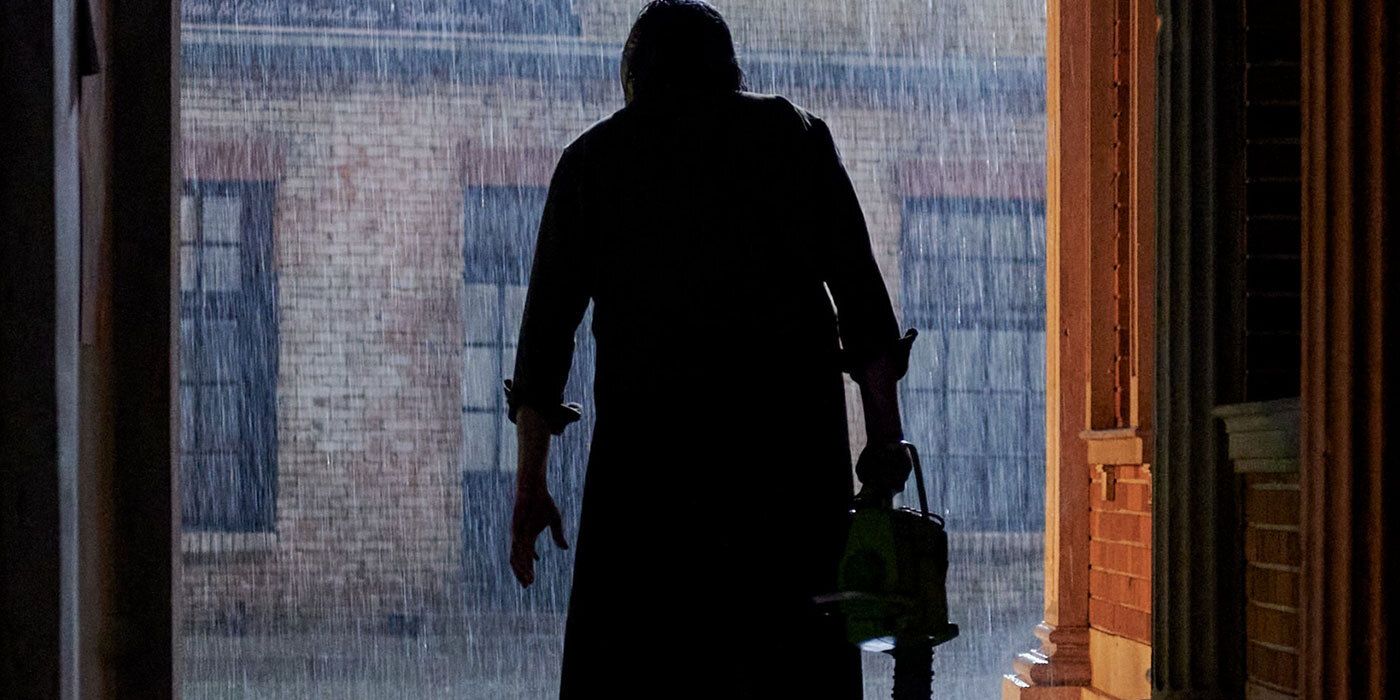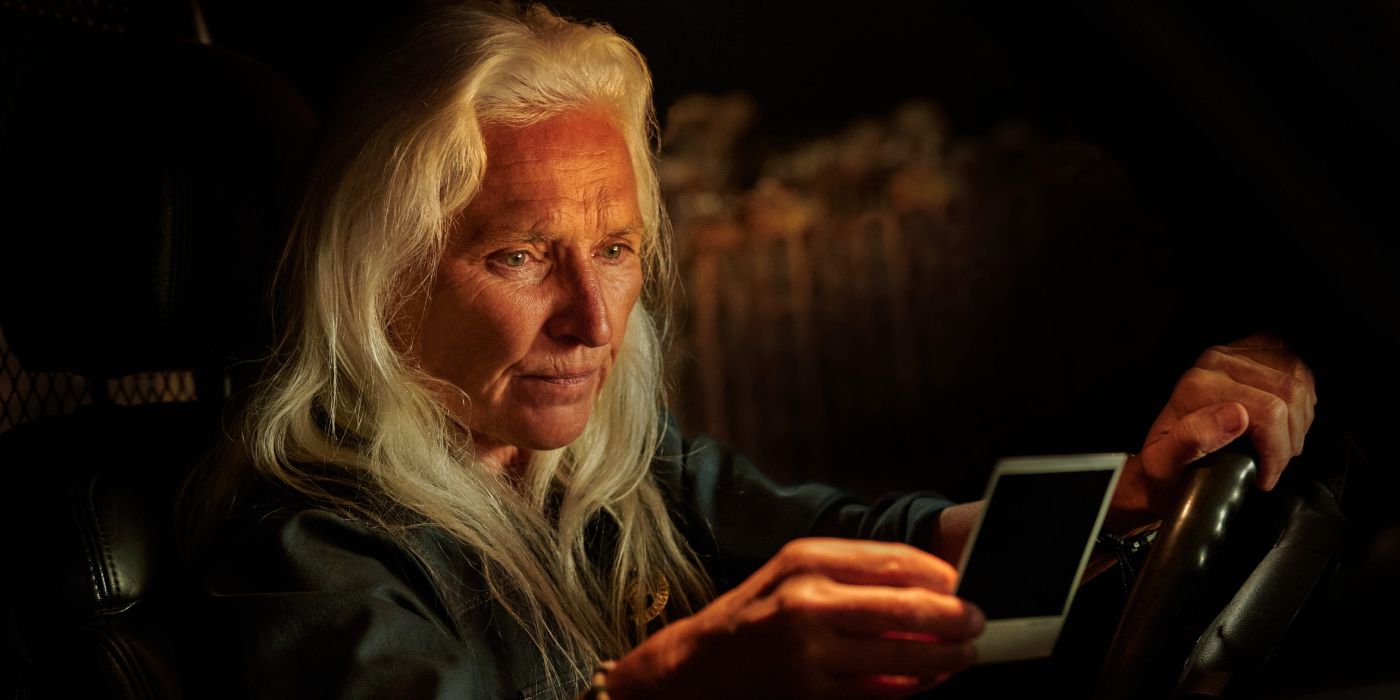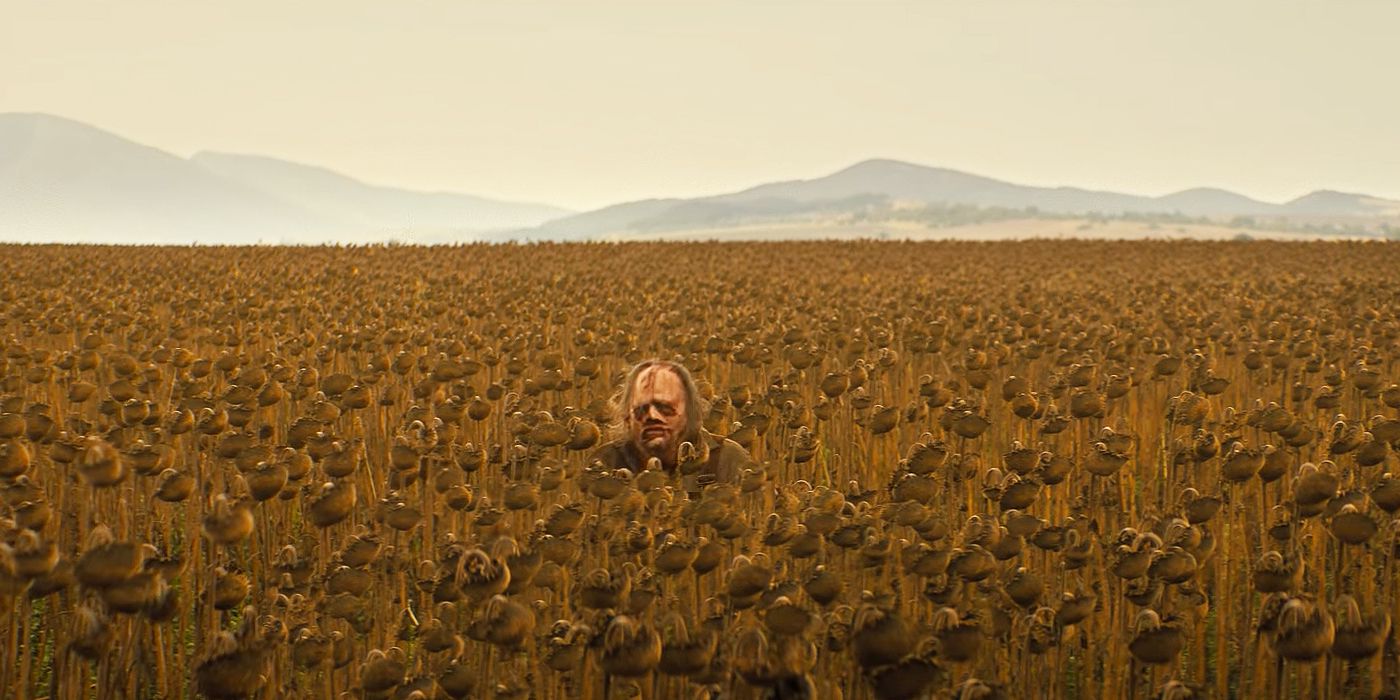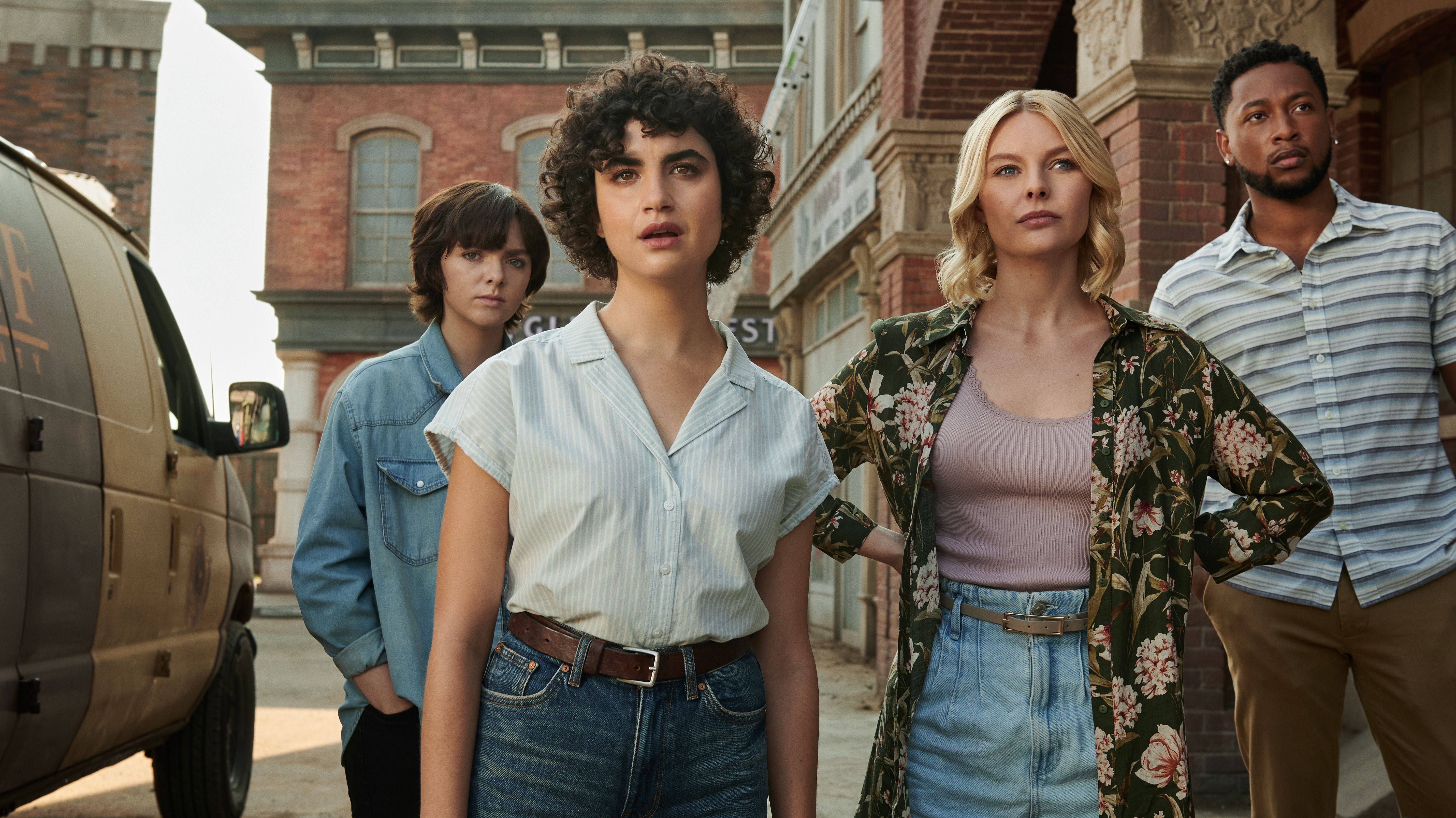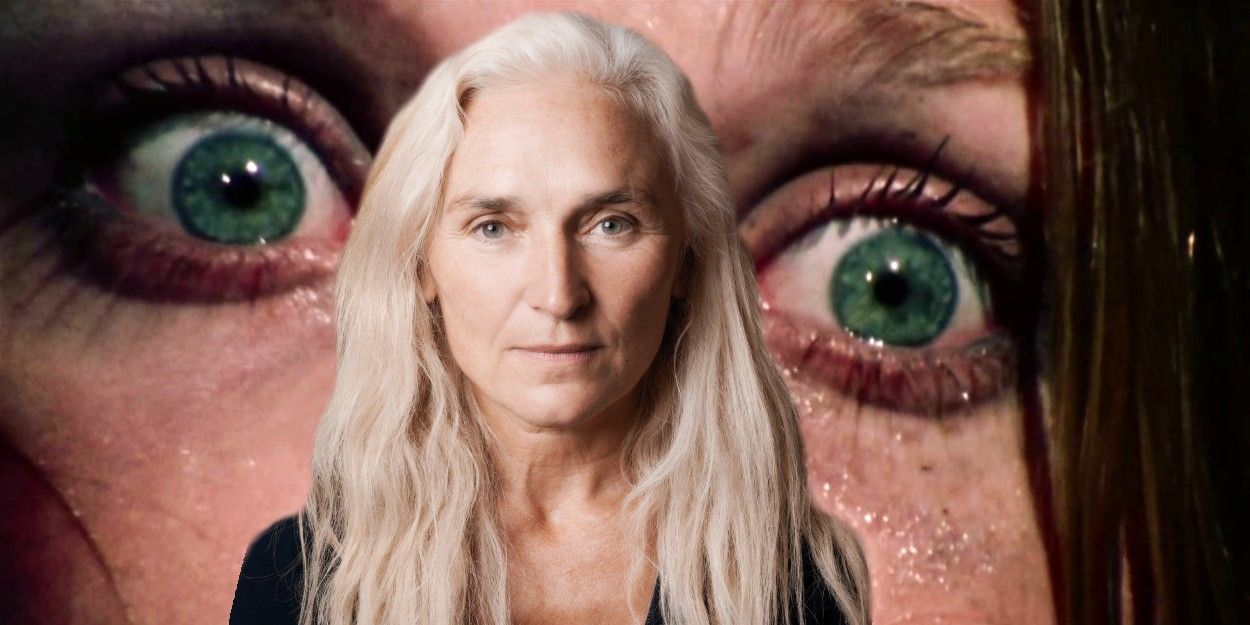Warning: The below interview contains a minor spoiler for 2022's Texas Chainsaw Massacre, hitting Netflix on Feb. 18.
Tobe Hooper's The Texas Chain Saw Massacre is well-known for its visceral and raw terror. However, the beloved 1974 horror film was also created, in part, as a political satire replying to America's Watergate scandal. While the idea of anyone stumbling into a cannibalistic household is scary enough, Hooper also used Leatherface -- and his killer family -- as a way to discuss the ruptured American fabric of the 1970s -- a time when governmental corruption was known about but denied to an absurd and dangerous extent. Nearly fifty years later, Leatherface returns to the big screen in 2022's Texas Chainsaw Massacre. Ahead of the film's release on Netflix, CBR sat down for an exclusive interview with director David Blue Garcia to discuss how Texas Chainsaw Massacre speaks to America's current socio-political landscape.
Garcia had a tricky task ahead of him, bringing Leatherface back while also updating the lore of Hooper's iconic film. During our chat, Garcia delighted in finding creative ways to deliver fresh kills and reflected on how Texas Chainsaw Massacre fits into Scream's requel rules.
CBR: In the past, Tobe Hooper talked a lot about how the Watergate era inspired The Texas Chain Saw Massacre's dark comedy. What responsibility, if any, did you feel when you're directing the film to explore the current political and social landscape for comedy?
David Blue Garcia: Yeah, this is the first time I've been asked that angle on this question. The social and political landscape of our country is definitely present in our film. Although I wouldn't say that the film is trying to say anything. The characters in our film are saying things, and they have points of view, but the film isn't. As to the comedy, when I watch the original film, I do notice the dark comedy more now. It's something people forget. They think it's like this crazy, wild, thrilling, suspenseful gory picture. But there's a lot of really funny stuff in it -- stuff that goes on too long or moments when we're just kind of like, "Okay, what's going on?" You can tell that there's a sense of humor behind it, especially if you watch The Texas Chainsaw Massacre Part 2, and that's almost outright comedy.
Levity is something that I wanted to bring to this picture. You saw the film, so you can see there are moments throughout where I bring in some of that humor. One of the first things I brought into the film as a director was the cell phones and the bus sequence, which were not originally part of the script. But I just decided, as soon as Leatherface comes on the bus, everyone's going to be filming it. That's just what people do now. So I added that sequence, played it for a little bit of a joke because it's a commentary on our cell phone-obsessed and filming everything obsessed culture, canceled culture as well. So anyway, that's the kind of stuff I was looking to add to the movie.
So many people love Leatherface. They empathize with him, despite him being a cannibal -- which is always so funny to me. From your perspective, when you were directing that moment when Leatherface first comes on the screen, what did you want to get across with him?
Yeah, [laughs]. I think I'm one of those people too. Sometimes I'm like, "Why am I following Leatherface in this scene? Why do I think he's the hero in this moment right now?" So I had to remember to not direct him that way. But I think it's inevitable that some people will side with him.
Something I wanted to bring to him was the fact that he's not a fully developed person. He still isn't. He grew up in this messed up household with his family that mistreated and abused him and used him in certain ways. He's been living in relative tranquility for the last 50 years in this orphanage, but when these young people come to town and disrupt his life, the old Leatherface comes out.
He backslides! [laughs]
Oh, yeah, he backslides a little bit. In 50 years, the world has changed a lot, but Leatherface hasn't.
This film is very gory. One minor spoiler -- but I love how that wrist break scene! I loved how up close it was and once that happens, we're off on this bloody rollercoaster ride. Did you always intend for that to be the turning point?
Yeah, that was how it was scripted. I wouldn't say that every violent moment was scripted. There's a lot that we added. For instance, in Richter's sequence, there was only one thing in that sequence. We were like, "Now we need to destroy him. We just came up with more and more ways to hurt this guy."
That was also something that Fede Alvarez taught me. Modern audiences are so desensitized to violence that in order to get them to pay attention, you got to up the ante. That arm break was like the best way to get the audience ready for what this movie was going to become. And it's also a nice homage to my first film, Tejano, because I have a pretty gruesome arm break in that as well.
Tejano is also set in Texas, and you were born and raised in South Texas. What did you want to get across about how Texas is portrayed in this film? And what do you think are some things that other filmmakers miss when setting a film in Texas?
Yeah, that's a very complicated question. I'm always living in Texas and having made two Texas films, I'm always dealing with the mythology of Texas, which is world-renowned. You can go to the middle of Siberia, and they know what Texas is. But everyone thinks of certain things. They think of cowboys and they think of big ranches and stuff like that. But like the reality of Texas is that most people live in big cities and they're very diverse culturally.
And so that's why this is a great film because it explores these diverse tech people from a big city, these young entrepreneurs with idealistic values that come to the rural areas -- which definitely exist all across Texas. And there's a big culture clash there. And that is happening all over the country, as well as in Texas, and it's something that we're all dealing with culturally and learn how to navigate.
I will love to talk a little bit about Sally Hardesty. I don't want to spoil anything, but this is the third film in a row that's brought back a legacy final girl. We've seen Halloween's Laurie, Scream's Sidney, and now Sally. Why do you think this is happening in our "requel-era," and what did you want to do with Sally -- knowing that you're continuing this trend?
Yeah, in my opinion, the reason they're bringing these characters back is that it's fun to explore where they've been since these first films. It's also a great way of passing the torch. We're trying to tell this story and keep the story alive for another generation. But they're still fans of the original out there, so many of us. So it's fun. It's a little bit of fanservice in the sense that we get to see what happened to a beloved character, but it's also a way of introducing us to new protagonists that are going to continue the story into the future.
Is there anything particular you wanted to get across with this iteration of Sally?
Sally is dealing with her own survivor's guilt. Her story feels unfinished because she's never gotten the vengeance that she's been looking for with Leatherface all these years. She hasn't found him. So she's able to relay some of her wisdom to young Lila and Melody in the story so that they don't make the same mistakes.
Watch Leatherface's bloody return to the screen in 2022's Texas Chainsaw Massacre, slaying on Netflix on Feb. 18.

